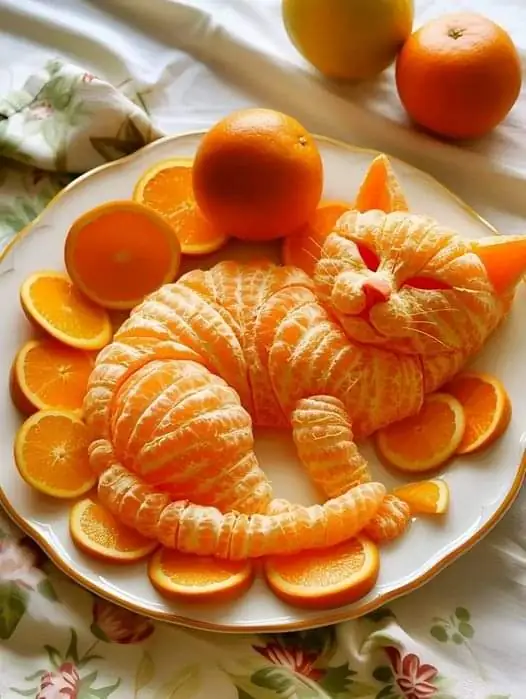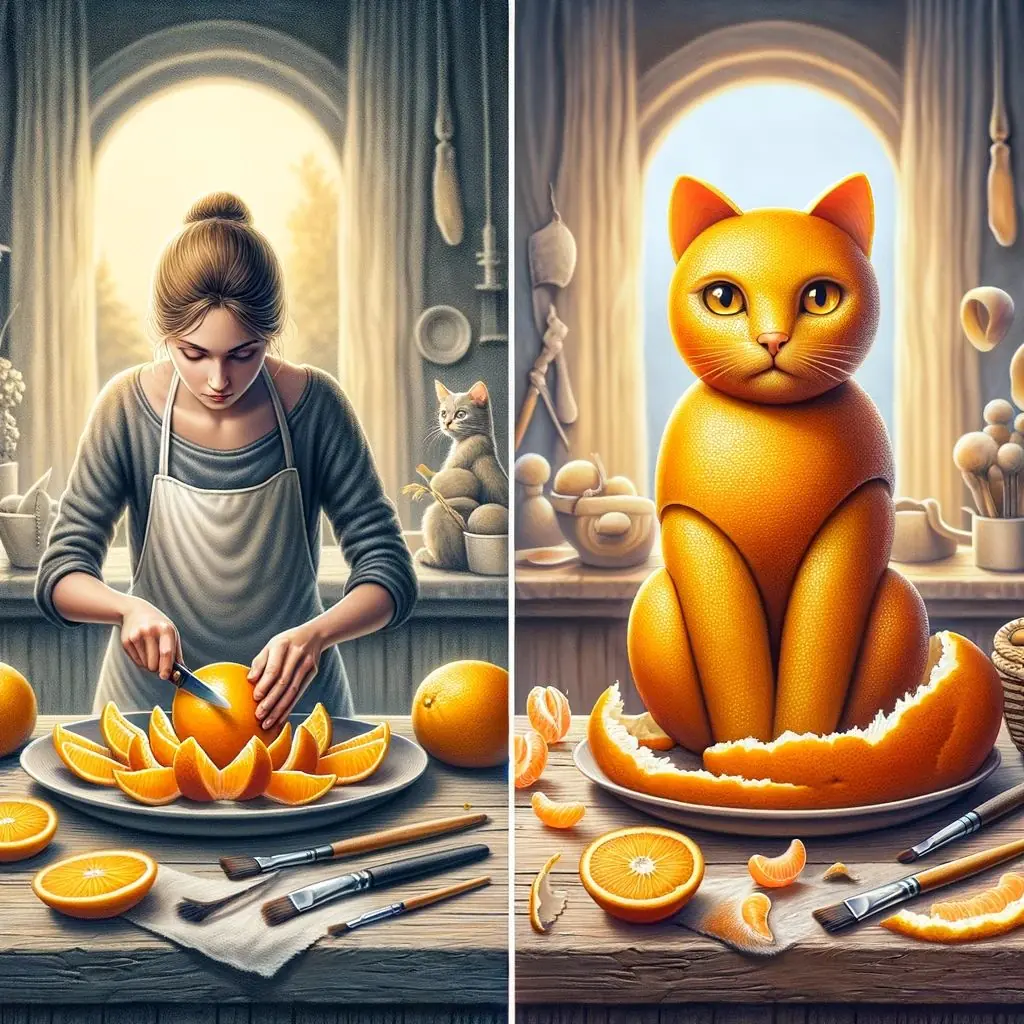
Embracing Craftsmanship: Transforming Everyday Tasks into Art

Artistry in the Everyday: The Laborer and the Artisan
Artistry knows no bounds; it is a universal language that can turn the mundane into the sublime. This truth is vividly captured in the image before us—a simple orange, transformed into an intricate representation of a cat, replete with a playful pose and a coat of vibrant orange segments.
The Dichotomy of Work: Laborer vs. Artisan
Consider two methods of work: the laborer’s and the artisan’s. When asked to peel an orange, the laborer completes the task efficiently, delivering the fruit, free of its skin, upon a plate. The work is done; the objective is met. This is the first approach, where the act is measured by its completion rather than its journey.
Contrast this with the artisan’s approach, as illustrated in the provided photograph. Here, the orange peel is not merely placed; it is sculpted with care and creativity. The artisan has transcended the act of peeling to render a playful scene. This is a labor of love—a testament to the power of artistry.
Bridging the Gap: From Labor to Artistry
The difference between labor and artistry lies in the perspective and the passion infused into the work. A laborer is guided by necessity, an artisan by vision. To shift from one realm to the other, one must:
- Embrace Creativity: See beyond the task to its potential for beauty.
- Cultivate Skill: Hone the craft until technique becomes second nature.
- Infuse Passion: Let the love for the work guide every action.
- Seek Inspiration: Find muses in the world around, as mundane as they may be.
- Value the Process: Recognize that the journey is as important as the destination.
The Artistic Laborer: A Harmonious Blend
The true magic happens when the laborer’s reliability meets the artisan’s creativity. It is not about choosing one over the other but blending both to achieve excellence. The image of the orange cat embodies this harmony—functional
Reflections on the Orange Cat Art

The orange cat in the image is more than a culinary delight; it is a microcosm of artistic endeavor in the everyday. It challenges the observer to rethink their interaction with the ordinary and encourages the maker to find joy in creation. The meticulous arrangement of each peel, the careful placement of each slice, all contribute to a composition that is as pleasing to the senses as it is to the soul.
The Value of Artistic Labor
In our contemporary society, where time is currency and productivity is king, the artisan’s approach is often overshadowed by the urgency of the laborer’s efficiency. Yet, this image is a gentle reminder of the inherent value in artistry. The laborer may earn wages, but the artisan earns legacy. It is the difference between a meal forgotten and a creation immortalized in the collective memory.
Fostering Artistry in All Fields
To ensure that the artisan’s approach flourishes across all fields of work, it is imperative to:
- Recognize and reward creative efforts.
- Encourage innovative thinking in education and training.
- Support environments that allow for artistic expression.
- Promote a culture that values aesthetics as much as it does functionality.
By doing so, we craft a world that not only appreciates the final product but also cherishes the creative spirit that brings it to life.
In Conclusion: The Laborer’s Task, The Artisan’s Canvas
The image of the orange cat is a clarion call to all workers—be they in offices, studios, or kitchens—to view every task as an opportunity for artistry. It asks us to blend the laborer’s diligence with the artisan’s imagination, to find fulfillment not just in completion but in creation. And in doing so, we transform not only the fruits of our labor but also the very essence of work itself.